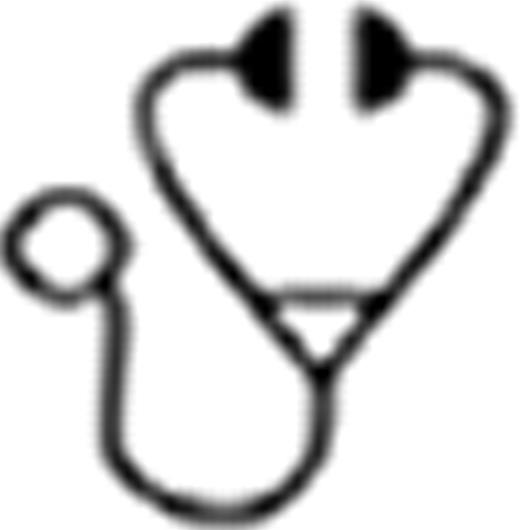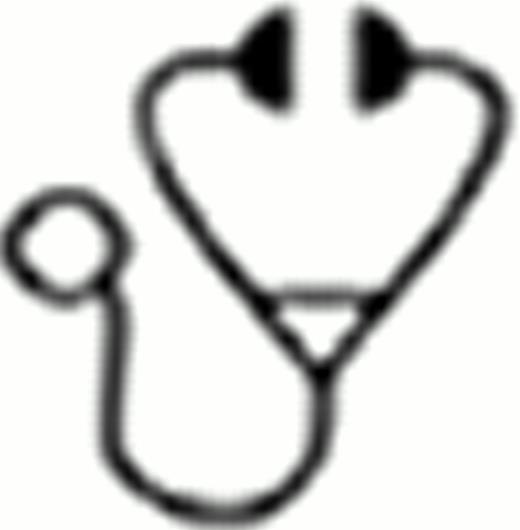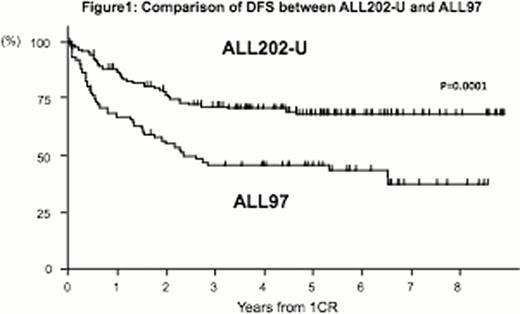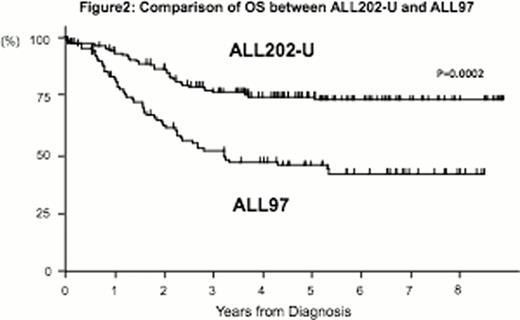Abstract
Retrospective studies have shown that AYA with ALL treated with pediatric protocols have better outcomes than similarly aged patients with adult protocols, but prospective studies comparing AYA with pediatric schedules are scarce. So, we conducted a phase II multicenter study (JALSG ALL202-U) in collaboration with the Japan Association of Childhood Leukemia Study (JACLS) to determine the efficacy and safety of pediatric type therapy (JACLS ALL-02-HR).
From June 2002 to September 2009, patients (age range 16–24 years) with previously untreated ALL (excluding Philadelphia-positive ALL and mature B-cell ALL) were consecutively registered in this study. For patients with t (4; 11), allogeneic stem cell transplantation (HSCT) was recommended during their first complete remission (CR), if donors were available; whereas for patients without t (4; 11), there were no criteria for choosing HSCT. This protocol consisted of induction therapy (pre-phase with oral corticosteroids and 5-drug induction), consolidation phase including 1) consolidation therapy, 2) sanctuary therapy with two cycles of high dose MTX, 3) reinduction therapy, 4) reconsolidation therapy and 2-year maintenance therapy. Intrathecal chemotherapy was administered during each cycle. In comparison with the former JALSG ALL-97 adult protocol, the pediatric-type therapy showed an increase in cumulative dose of CPM (1.5-fold), VCR (1.2-fold), L-asp (18-fold) and MTX (3.7-fold), respectively. As for the intrathecal chemotherapy, the duration was longer (ALL97; 4 to 21 week, ALL202; 1 to 94 week) and the frequency was increased from 8 to 15 times.
There were 138 eligible patients: median age was 19 years old and 56% were male. Of the eligible patients, 134 patients (97.1%) achieved CR. The estimated the 4-year OS rate was 74% and 4-year DFS rate was 71%, respectively. Compared with previous JALSG ALL-97 study, CR rate (97.1% ALL202, 84% ALL97; p=0.01), 4-year DFS rate (fig 1, 71% ALL202, 46% ALL97; p=0.0001) and 4-year OS rate (fig 2, 74% ALL202, 46% ALL97; p=0.0002) were significantly higher in this study. During induction therapy, major grade III-IV adverse events (AEs) were FN, DIC, pancreatitis and AST/ALT. The frequency of FN was higher with ALL202-U protocol (43%) than with ALL-97 protocol (12%). During consolidation phase and maintenance therapy, the most common toxicity was FN. The treatment duration during induction therapy and consolidation phase was longer than planned. In comparison with the outcome of JACLS ALL-02-HR protocol, grade 3 to 4 AEs were similar.
This pediatric-type therapy was very efficient, yielding a 97.1% CR rate, 71% 4-year DFS and 74% 4-year OS in AYA patients. The protocol was tolerable, but FN and treatment prolongation were observed. Grade 3 to 4 AEs were similar to pediatric group. The data reported here were collected at the time of interim analysis. The latest data including AEs are currently being reviewed and will be disclosed at the presentation.
No relevant conflicts of interest to declare.

This icon denotes a clinically relevant abstract
Author notes
Asterisk with author names denotes non-ASH members.




This feature is available to Subscribers Only
Sign In or Create an Account Close Modal